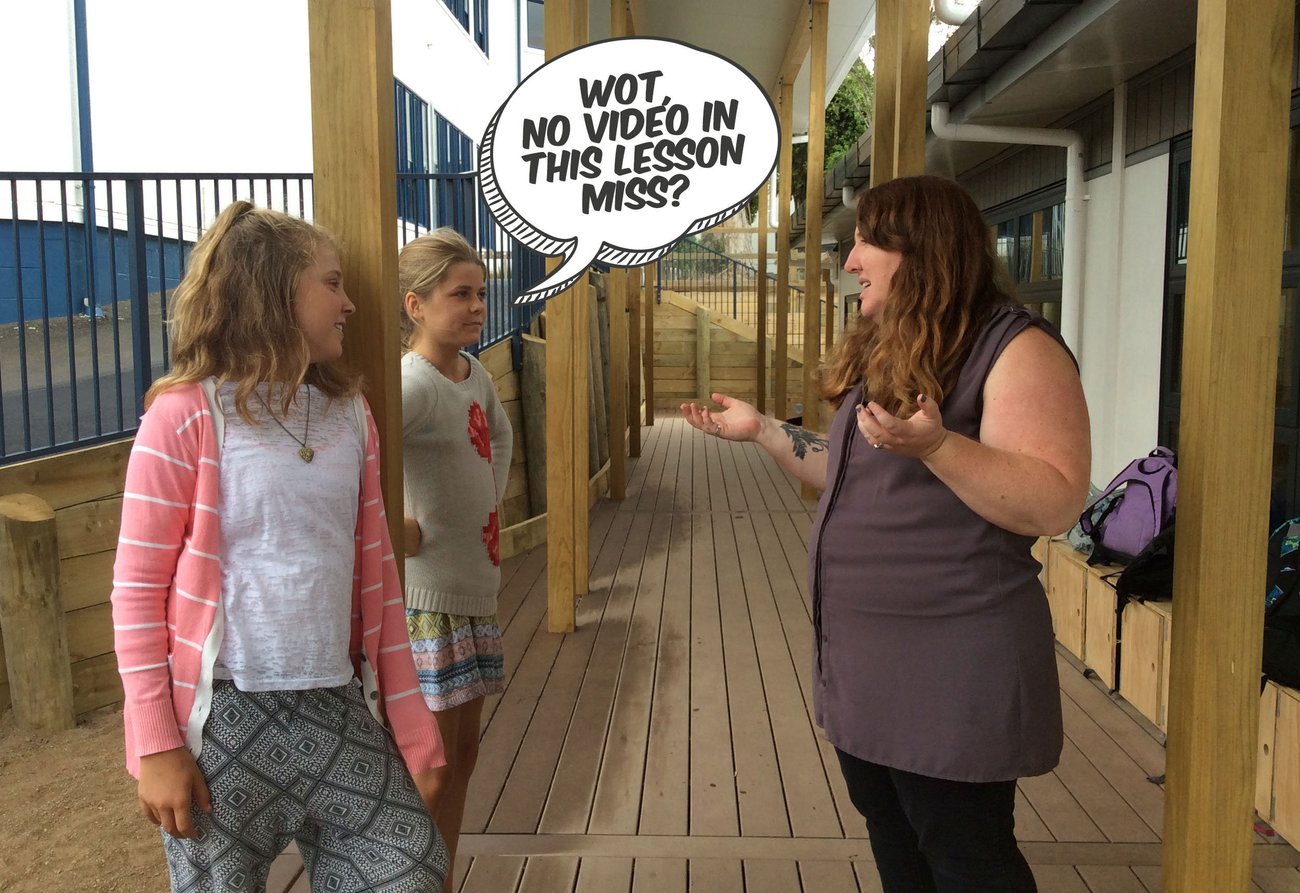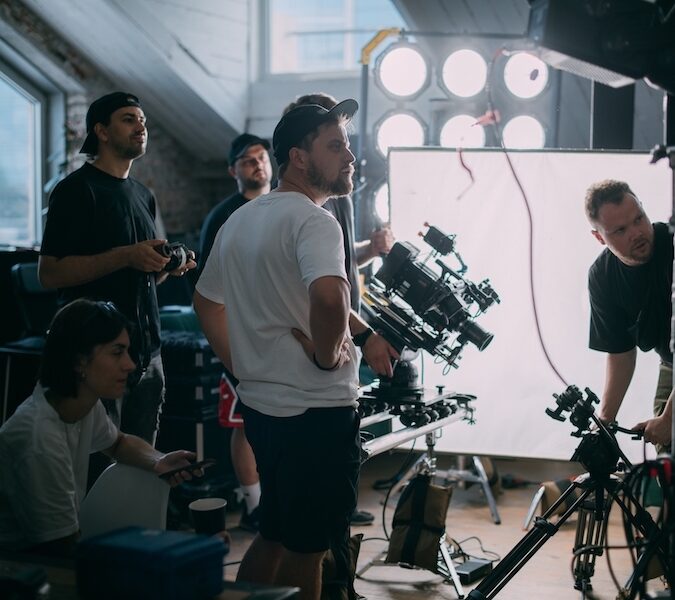
Watching video is instantly engaging. I put a video on, and my students are captured. It’s a way of making learning fun. And it’s repeatable – if you’ve made a video to explain a particular concept and a student finds it hard, or has forgotten it, they can just watch again.
I use video in all sorts of ways:
Watching
Video is a way to get information quickly and enjoyably. Students work at their own pace; watch again if they want to, or skip through to information they need. For example, in a recent topic on digital citizenship I chose three very different videos (including a rap) to get them thinking. If I’m at the front talking, it might be too fast for some and boring to others. Anyway I’m not that good at rapping! Using video is also good for complex topics. Like when we were talking about how red and white blood cells work. Being able to watch an animation of the cells solidified what we had learnt. Other times I make short instructional videos so students can go home and remind themselves of what they’ve learnt. Or I give them a video and they go home and watch it, and we talk about it in class the next day. It can really save time.
Making
Students love presenting information in video form. In the past we often asked students to create a poster, but it’s easy for them to just regurgitate ideas they have found online – it doesn’t always encourage them to think deeply. With video they think about the information they’ve gathered, and then put it in their own words and work out how to present it. Learning through video is especially good with a student who isn’t a high achiever in traditional skills – writing or publishing, or being quiet and making nice borders. Suddenly video will capture them, and you’ll be surprised at their thinking and learning. With the digital citizenship project, students had to create their ICT user statement. One group of girls decided to do a video retelling of the three little pigs story, with the wolf representing a creepy cyber bully-type, and the pigs representing different reactions to things that are unsafe online. Students can get quite “yeh, yeh, don’t be mean online” about cyber safety – they know what adults want them to say. But for these girls, thinking about representing the information in a totally different way showed deeper understanding.
Connecting
Last year we made videos using the lip-syncing app Dubsmash and put them on our YouTube channel. We showed our Dubsmash videos to a class in Napier, and they created some videos as a response. Then four classes used Google Hangout to have a live lip-syncing competition. Maybe it doesn’t sound like a lot of learning going on. But an important thing about teaching is building a relationship with the students – if you don’t have that, it’s hard. There was one student who was really quiet, and she made a dubsmash and she had this crazy sense of humour that I didn’t know about. After that I could make a connection with her. Collaborating with people outside school is also a powerful tool – for teachers and students, who love having an authentic audience for their work, and so much better if it is other children. It makes them more curious about other people. Recently we did a Skype session with an author we are reading, and we also used Skype to leave videos for a couple of classes in the US who were reading the same book as us. I’m planning to do a virtual field trip this year connecting students to experts in science and technology.
Professional development
We are doing a lot of work with [NZ professional learning and development organisation] CORE Education this year, which uses video a lot. There is a tonne of professional development video online, including on the Ministry of Education’s Te Kete Ipurangi site and the Network for Learning portal Pond. We’ve started using video in staff meetings – playing a YouTube clip for example. Recently someone chucked in a clip from The Big Bang Theory to illustrate a point. I know teachers who video their own classes and then go back over them, either on their own, or with a mentor, to improve their teaching practice.
Becka Nathan is a Year 7-8 teacher and e-learning leader at Karori Normal School in Wellington.
—
This article originally appeared in The Download, a publication produced by Tangible Media for Chorus.




